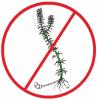-
Posts
1 -
Joined
-
Last visited
Stophydrilla's Achievements
0
Reputation
About Me
MISSION
After the discovery of Hydrilla in the Cayuga Inlet in 2011, local, state, and agency staff formed the Hydrilla Task Force of the Cayuga Lake Watershed to respond to this invasive threat. The overall goal is to eradicate Hydrilla from the Cayuga Inlet and its connecting tributaries, and to prevent its spread in order to help prevent native species decline and habitat loss within 5-8 years. Eradication efforts involve education and outreach, careful monitoring (through observation of native/invasive plant populations as well as regular water quality testing), and professional application of herbicide control measures.
Hydrilla is an invasive aquatic weed that has long, slender stems that can grow underwater to lengths of up to 25 feet. Hydrilla usually has four to eight small, pointed leaves arranged in circular whorls along the length of its stem. The edges of the leaves are lined with sharp teeth. Hydrilla also reproduces and spreads by buds produced along the stems (called turions), or overwintering tubers.
GENERAL INFORMATION
Native to Southeast Asia, Hydrilla was brought to the United States through the aquarium trade. It was first found in the wild in Florida in the 1950s, and has since spread to many parts of the U.S. It is extremely hardy and can grow in many conditions (including low light levels and poor nutrient areas). Hydrilla grows aggressively (up to a foot a day!), and creates a thick mat of vegetation which can quickly shade out other aquatic plants, displacing beneficial native species. Hydrilla fragments (which can sprout roots and establish new populations) are easily caught and transported by boats and boat trailers, and can be dispersed by wind and water currents.


